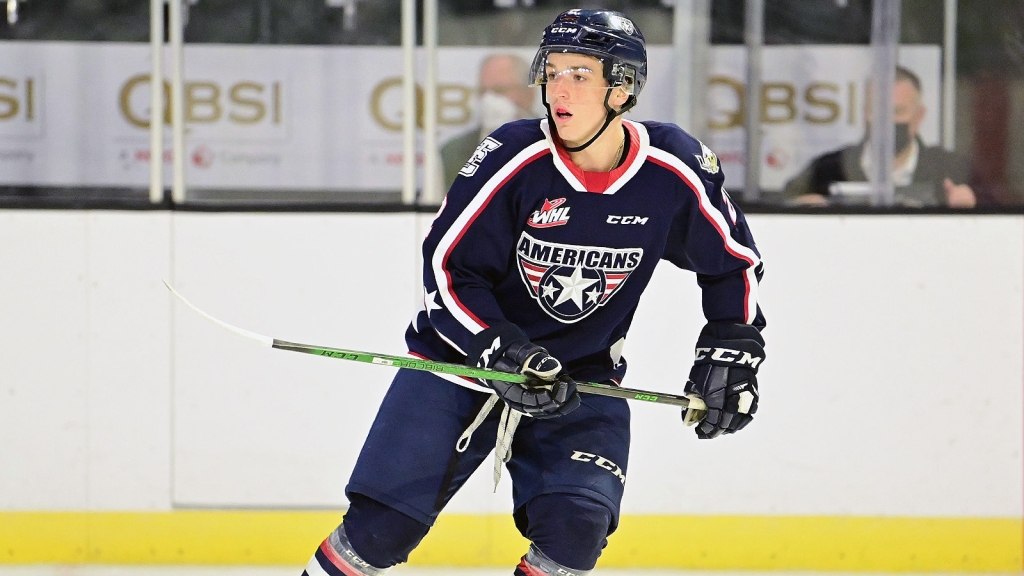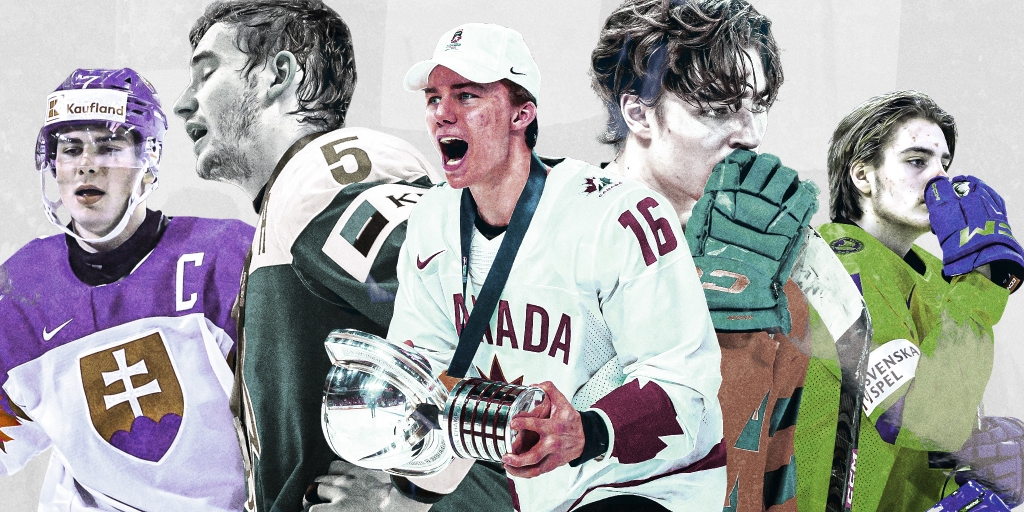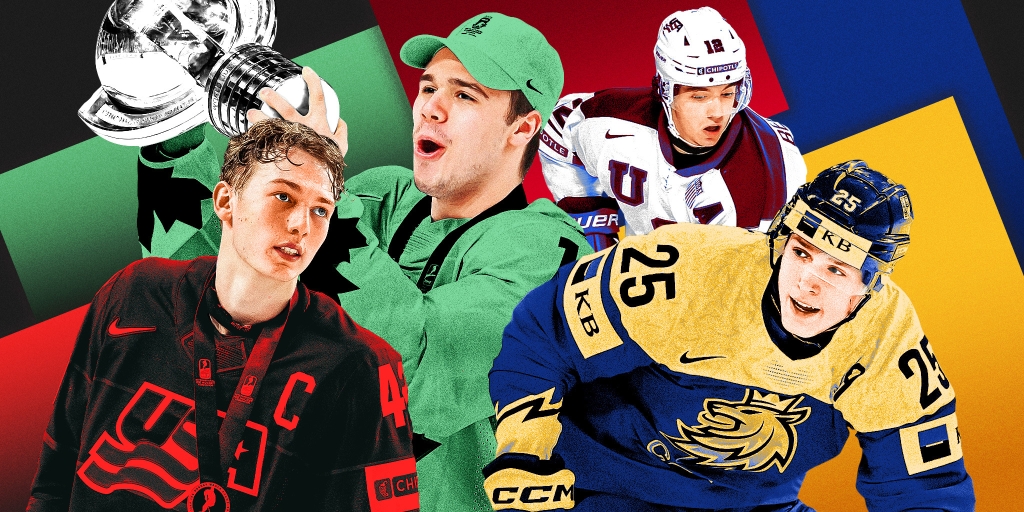WHL Stock Watch: Lukas Dragicevic scoring at an historic clip from the blue line for Tri-City

While the World Juniors were occupying the spotlight, the WHL went on in the shadows.
In that time, the gap between the top and bottom teams expanded, with the Winnipeg Ice, Red Deer Rebels, Saskatoon Blades, and Moose Jaw Warriors looking like the top teams in the East, while the Seattle Thunderbirds, Portland Winterhawks, and Kamloops Blazers cemented their status in the West.
The scoring race heated up, too. Andrew Cristall made up ground on Connor Bedard, while Koehn Ziemmer, Riley Heidt, Jared Davidson, and Nate Danielson went on heaters in December. There was also history made by a draft-eligible defenceman featured in this article.
The World Juniors also created opportunities for other players to set up in the absence of their star player. That’s where we start.
Stock Rising
Fraser Minten, F, Kamloops Blazers (Toronto Maple Leafs)
Last month, Fraser Minten featured in the stock steady section, pointing out his lack of 5-on-5 scoring. That hasn’t changed, even with his recent scoring tear with Logan Stankoven away at the World Juniors. But it should have.
In recent weeks, Minten is carrying the puck more in transition, attacking the inside more regularly, and getting open in the slot with more success. The result has been a massive uptick in both shots and scoring chances. His expected goals per 60 has risen from a relatively average 0.99 to 1.85, a rate better than 95 percent of CHL forwards in a given season.
With Kamloops loading up for a deep playoff run and the Memorial Cup, expect to see a lot of Minten down the stretch. If he maintains this shot volume, the even strength production should surge.
Josh Filmon, LW, Swift Current Broncos (New Jersey Devils)
A model of consistency, Josh Filmon has scored goals in 17 of his 30 games. And that’s not to mention the game where he scored six on his first six shots. No, that’s not a typo. He looks stronger and more coordinated than last season, which has only helped his game.
The most impressive part of Filmon’s goalscoring surge is the number of ways he’s doing it. He’s always had the instincts. Despite his 6-foot-3 stature, he’s usually anonymous to defenders, slipping behind their backs on his way to the net or getting lost just outside the slot. And he also understands how to push away from defenders just as a passing lane opens. He’s carrying the puck more, initiating give-and-goes that emphasize his off-puck movement and off-the-pass shooting, as well as cutting inside, beating defenders with his hands, and firing in motion.
Filmon likely won’t shoot 26 percent for the rest of his WHL career, but high teens seem possible. And goals aren’t his only source of impact, as he’s a capable defensive player and 14 assists undersell his playmaking ability. He’s quickly shifted from a classic mid-rounder project to an exciting prospect.
Lukas Dragicevic, D, Tri-City Americans (2023 NHL Draft)
The season’s only halfway over, and Lukas Dragicevic has already etched his game in the history books. His just-snapped 27-game point streak’s the longest for a defenceman since at least the 1996-1997 season (as long as the WHL records the data on their website). Along the way, he accumulated 37 points, including 30 assists.
In total, Dragicevic has 46 points in 36 games, a near-1.3 point per game clip. And he’s not particularly dependent on the power play to score. His activation game is one of many selling points, jumping into the play often and in creative ways. Even if he can’t beat defenders with his hands and feet, he understands how to build offence through give-and-goes and deception. Keep an eye out for Dragicevic. Expect him to generate some serious discussion in the second half.
Honourable Mentions: Connor Bedard (2023), Stanislav Svozil (Columbus Blue Jackets), Maximus Wanner (Edmonton Oilers), Parker Bell (Calgary Flames), Nate Danielson (2023), and Lucas Ciona (Calgary Flames).
Stock Steady
Conor Geekie, C, Winnipeg Ice (Arizona Coyotes)
Zach Benson is Winnipeg’s play-driver. By now, that much is clear. Conor Geekie has an argument as the team’s second-most dynamic player, however. He’s an imaginative puck carrier and playmaker, just as capable of beating an opponent with a slick deke as he is a pass. He also has a penchant for well-timed steals.
However, Geekie’s production remains at the same level as last season, as does his game. That is, it’s good, but it falls short of the levels expected from a player with his skill. He still lacks the precision playmaking and puck protection mechanics that will be required for him to find success in the NHL. To his credit, he’s become a much better off-puck player in the offensive end, coupling his space-finding ability with his shot to become more of a goalscoring threat. He’s still tracking as a potential middle-six centre in the NHL.
Stock Falling
Carson Lambos, D, Winnipeg Ice (Minnesota Wild)
This hasn’t been a banner season for Carson Lambos, at least so far. He was omitted from Canada’s 2023 World Juniors team after making both iterations of last year’s team in a shocker. He only has three points in his last 12 games, too. Ben Zloty has taken on more of Lambos’ offensive work. By other metrics, like entry prevention, zone exit percentage, and defensive zone breakups, he lands fourth on Winnipeg’s blue line – not great.
Lambos’ game has improved. He’s become more consistent on the defensive end, leveraging his physical game into more play-killing ability along the boards. But the flashes of deception and manipulation that were so intriguing in previous years have remained just flashes. Lambos will start scoring again. To reach new heights, he’ll have to build upon last season’s improved puck game.
Mats Lindgren, D, Red Deer Rebels (Buffalo Sabres)
Given the context, Mats Lindgren probably wouldn’t score much in Red Deer. They run most of their offence through their forwards, with Christoffer Sedoff being the only defencemen on the team who consistently creates. Still, that Lindgren lands fourth on his team in scoring from the blue line and third among draft-plus-one defenders is concerning.
Lindgren, for the most part, has held up his end of the bargain in the defensive third. He’s a noticeably better defender, largely eliminating his tendency to over-commit when facing speed and tightening up his reads along the boards.
The rest? It’s a bit dicier. Lindgren’s carrying the puck on breakouts more than last season, but he’s far less successful at creating offence with a carry breakout than his far more advanced passing. The offensive touches are few, and the few he gets rarely lead to much offence. Lindgren’s playing an important role on a top team in the WHL, so it’s too early to sound the alarm, but it’d be nice to see him build upon last season’s flashes of offence.



